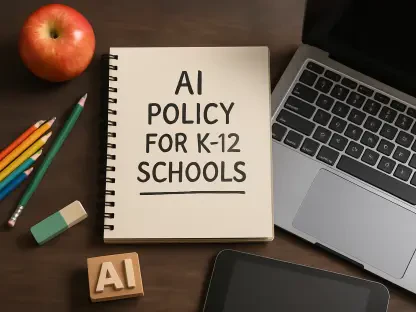The abrupt cessation of federal funding has thrust several school districts in southcentral Kentucky into a fiscal maelstrom, precipitating a frantic search for solutions to impending budgetary shortfalls. With over $6 billion in federal grants frozen nationwide, the Kentucky Department of Education has revealed that $87 million in anticipated funding earmarked for the state now hangs in the balance. These funds were initially set aside for vital programs aimed at sustaining academic initiatives, professional development, and critical support services, impacting districts’ ability to plan for the current school year. The sudden review has left educational institutions navigating potential cuts and reprioritizing essential services to manage the unexpected financial strain.
Strained Budget Projections and Their Implications
Funds frozen by the federal oversight have substantially impacted district budget projections, forcing administrators to reconsider staffing decisions and program offerings. Specifically, the Kentucky Department of Education had allocated significant resources for student support, effective instruction, migrant education, and English language acquisition programs, all of which now face uncertainty in distribution. This unpredictability has left school district financial officers in an unenviable position, as the freezing of funds directly influences personnel planning and program deployment for this academic year. Kentucky districts, initially poised to receive $20.3 million for student support and academic enrichment, $33.6 million for effective instruction practices, $7.9 million toward migrant education, and $5.7 million for English language acquisition, now grapple with the absence of these resources, leading to immediate and potentially lasting adjustments to their financial strategies.
Adding to this challenge is the status of 21st Century Community Learning Centers, critical for student engagement during non-school hours, whose funding is tentatively secure for the 2025-26 school year. However, assurances for subsequent years remain absent, forcing districts to prepare for an unknown fiscal landscape post-2026. School leaders have thus been compelled to contemplate reallocating limited resources or drawing on contingency funds. In more drastic scenarios, there may be a need for programmatic cuts, which could impact educational quality and student outcomes. The looming uncertainty mandates a reconsideration of fiscal priorities and an intensified focus on alternate funding avenues if Kentucky schools are to maintain support for vulnerable student populations effectively.
District Responses to Funding Disruptions
Several districts are navigating uncharted fiscal territory as they adapt to funding disruptions, with each community facing unique challenges based on their demographic and geographic realities. For example, the Caverna Independent School District (CISD) highlights the precarious nature of their enrichment programs, including the potential loss of crucial extracurricular initiatives, if the funding freeze persists. Similarly, Bowling Green Independent School District is feeling the weight of nearly half a million dollars in frozen funds, a figure that underscores the potential for staff layoffs and program reductions should finances remain inaccessible until procedural budgets are finalized. The fiscal challenges extend to migrant education, as seen in the case of Warren County Public Schools, where the freeze endangers the academic stability of students whose families are migratory due to agricultural labor. Financial officers find themselves in a precarious position, attempting to bridge resulting funding voids with limited contingency resources while safeguarding educational quality and stability in their services.
Neighboring districts like Barren County Schools face similar predicaments, particularly regarding federal funding’s role in maintaining their migrant support program and crucial staffing positions funded through federal grants. The uncertainty extends to infrastructure and technology upgrades, given that integral projects face postponement or cancellation without timely access to funds. This ripple effect is palpable across all affected districts, as administrators weigh the consequences of withdrawing from planned improvements while continuing to serve the educational community. School districts, therefore, have started relying on innovative funding solutions and community partnerships to help fill financial gaps, recognizing that perseverance and adaptability are essential during periods of federal uncertainty.
The Broader Impact on Educational Programs
The front-line consequences of the funding freeze extend well beyond mere budget amendments, as schools like Butler County Schools and Logan County Schools illustrate the repercussions on various fronts of educational delivery. For Butler County, the potential loss of $250,000 in anticipated funding could necessitate adjustments in instructional upgrades and professional development, altering the standard of education provided. Projects like acquiring new buses and updating essential classroom technology, such as Chromebook purchases, are now in jeopardy, reflecting a potential decline in logistical support for students. This challenge coincides with broader curriculum and staffing implications, requiring districts to assess operational priorities closely to balance budgetary constraints and deliver holistic educational experiences amidst financial pressures.
The timing of these funding disruptions has exacerbated the strains felt across the educational landscape. With notification arriving late in the budget planning process, districts like Logan County have been forced to draw from their General Funds, placing even greater strain on operational budgets already tailored for specific educational needs. Delays in federal remittances have hindered critical allocations such as school safety initiatives and technology training for educators, underscoring the vulnerability of educational systems dependent on federal aid. As school systems endeavor to advocate for their funding futures, the complexities of navigating educational finance highlight an overarching challenge: maintaining school continuity and effectiveness in an unpredictable fiscal climate.
Navigating the Path Forward
The sudden halt in federal funding has plunged several school districts in southcentral Kentucky into a deep financial crisis, triggering an urgent scramble to find ways to address substantial budget gaps. Across the nation, more than $6 billion in federal grants have been put on hold, with the Kentucky Department of Education indicating that $87 million anticipated for the state is now uncertain. These funds were intended to support essential programs like academic initiatives, professional development for educators, and critical support services. The unpredictability of this funding has thrown schools into disarray as they try to plan for the ongoing school year. Schools now find themselves forced to consider cutting back and reevaluating which services are most crucial to keep running in light of their newfound financial difficulties. This unexpected fiscal challenge means many school districts must now navigate a landscape of reduced resources while still striving to meet the needs of their students and communities. They are grappling with difficult choices and must prioritize what programs can be maintained, downsized, or even eliminated to align with the reduced budget. The uncertainty has put pressure on school leaders, educators, and families, complicating efforts to provide a stable and effective learning environment.









